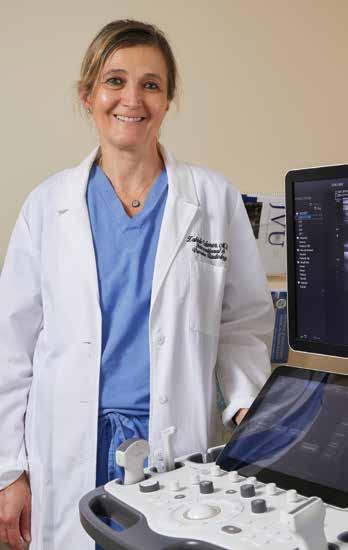
3 minute read
Not Just the Terrible Twos
When is an outburst more than a tantrum?
TIPS ON MANAGING TEMPER TANTRUMS • Establish a routine that includes consistent sleep, play and mealtimes. • Encourage your child to use words to communicate. • Praise good behavior as often as possible. • Stay calm and help your child describe how he or she may be feeling during a tantrum. • Provide two appropriate options as a way of giving them a sense of control in decision-making.
children begin to develop their language AS skills, they often express their feelings through their behavior. When they fall to the ground, cry, scream, kick, hit or bite, children are telling grown-ups that they are not feeling understood or that their wants and needs are not being met.
Temper tantrums are a normal part of childhood. We are all familiar with the “terrible twos,” but what should a parent do if temper tantrums are severe or persist beyond the early childhood years?
Challenging behaviors and heightened emotions can be tricky to differentiate from typical developmental milestones. According to the National Survey of Children’s Health, 1 out of 7 children ages 2 to 8 have been diagnosed with a mental, behavioral or developmental disorder.
“If a child’s behavior causes significant distress, interferes with their functioning in daily tasks or puts them at risk of harm to themselves or others, parents should consult a children’s mental health professional,” said Jill Brown, a licensed social worker, child therapist and director of the Parent-Child Clinical Services Program at The Lourie Center for Children’s Social & Emotional Wellness.
The Parent-Child Clinical Services Program is an outpatient clinic that offers a comprehensive approach to early identification, treatment and prevention of emotional, behavioral and developmental problems in infants and young children. The clinicians in the program help children find healthy ways to communicate with the use of therapeutic play and psychotherapy.
PAY ATTENTION TO SIGNS
During a tantrum, think about what your child may be trying to communicate through their behavior. • Is your child tired or hungry? • Is their clothing comfortable? Are they hot or cold? • Are they trying to be independent or take some control within their environment? • Are they having difficulty completing a task?
Thinking about your child’s physical and emotional experience and what they may be trying to express during the tantrum can guide you on how to respond. Children expressing distress are often seeking reassurance and support from parents and caregivers because they are overwhelmed and unable to manage these feelings on their own.
To learn how the Lourie Center can help your child, call 301-984-4444 or visit AHCYou.com/FA20Lourie.
Looking Deeper:
Advanced Imaging Sees How Blood Is Flowing
ASCULAR disease is any condition that affects
Vthe blood flow in your veins and arteries. These conditions include clots, plaque buildup in your arteries and ruptures. They can cause serious harm, such as stroke, heart attack or loss of circulation. Vascular problems can happen anywhere in your body but typically occur in your legs, neck, brain, kidneys, heart and abdomen.
In some cases, there are no symptoms of the disease. In others, like a blood clot in the leg, for example, you may experience swelling, pain or cramps. If you are at risk for developing a condition that disrupts your blood flow, your doctor may recommend vascular imaging.
“For those with hypertension, high cholesterol, diabetes, nonhealing wounds, a family history of aneurysm and who may be at high risk for stroke and heart attack, we can help detect potential disruptions in blood flow that can cause serious medical issues if left untreated such as loss of a limb or damage to the heart or kidney,” said Zahide Erkmen, MD, director of Vascular Imaging with Adventist HealthCare Imaging.
AN EASIER OPTION FOR DIAGNOSIS
By using noninvasive imaging techniques that don’t necessarily use radiation, such as ultrasound, specially trained radiologists and technologists can image your veins’ and arteries’ function and help your doctor determine the best treatment options for you.
As one of the only comprehensive, diagnostic vascular imaging programs in the area, the experts at Adventist HealthCare Imaging can help get a clear picture of potential problems in the veins and arteries in the neck, leg, brain and abdomen. With easy scheduling and convenient appointment times, our outpatient imaging offices can ensure you get care when you need it.
“Having this service easily available helps community members receive a faster diagnosis so they can get treatment quicker and resume their lives faster,” Dr. Erkmen said.
For more information about Adventist HealthCare Imaging’s advanced imaging services, visit AHCYou.com/FA20Imaging.

Zahide Erkmen, MD, director of the Vascular Imaging program with Adventist HealthCare Imaging.










